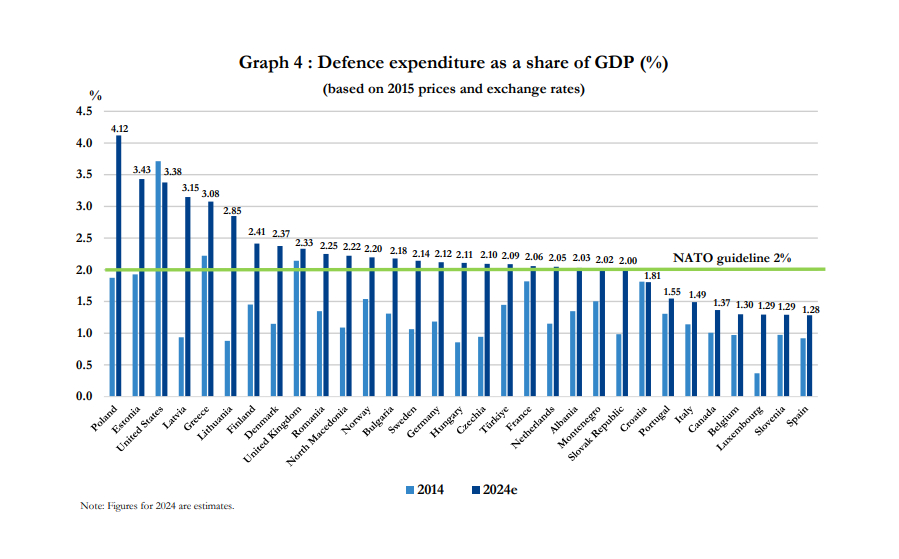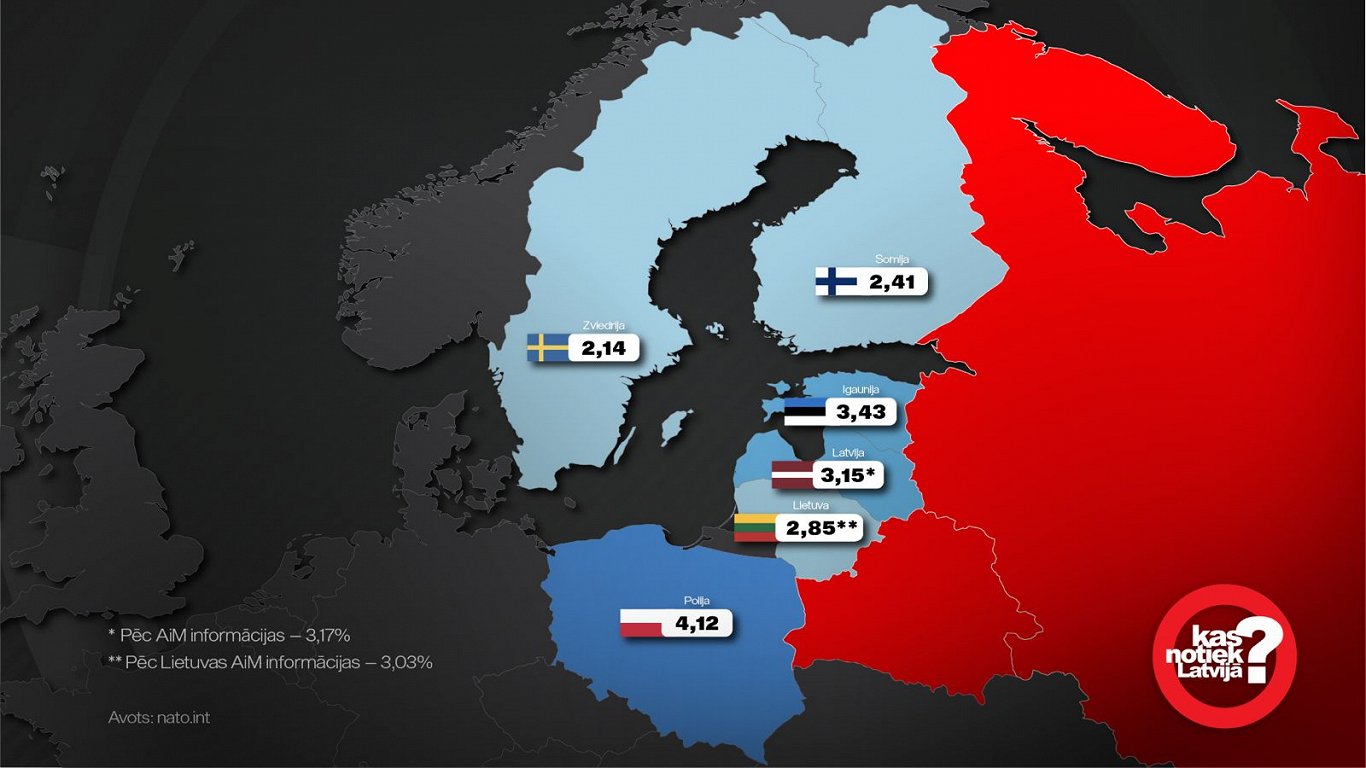In 2014 – just before Russia illegally annexed Ukrainian Crimea – only three NATO members fulfilled the recommended 2% of GDP funding criterion, but a decade on 23 members do so, according to the data collected by the alliance.
This summer's preliminary calculations show that Poland will spend the most - 4.12% of the gross domestic product (GDP) on defense this year, followed by Estonia with 3.43%, followed by the USA and Latvia.
Poland is also the leader in terms of expenditure growth, and has more than doubled its expenditure compared to 2022.

Latvia's growth has been even faster than policymakers expected in recent months. At the end of last year, when adopting the 2024 state budget, it was announced that its expenditure on defense will be 2.4% this year.
But now the Ministry of Defense reports that expenditure this year will reach 3.17% of GDP. Thus, one gets the impression that the increase in defense funding to 3% of GDP in 2027, promised in the declaration of Evikas Silina's government and expected to take place over several years, has already been fulfilled in the first year. But is it really so?
200 million euros for air defense, 10 million euros for strengthening the eastern border and 3 million for patrolling the Baltic airspace are added to this year's defense budget of 1.12 billion euros approved last year, but in fact this does not account for the full leap in expenditure.
The real reason is less positive in nature: major fluctuations in GDP forecasts, against which the share of defense spending is calculated.
In 2023, this year's budget was planned by predicting that Latvia's GDP will exceed 45.5 billion euros this year. However, the GDP forecast approved in the spring is a more modest 42 billion euros – so because GDP is likely to be smaller than expected, the current big spending on defense will constitute a larger part of it than expected.
Therefore, the indicator of defense funding as a percentage of GDP could end up being even higher, not because of a real increase in funding, but at the expense of even slower economic development.


























